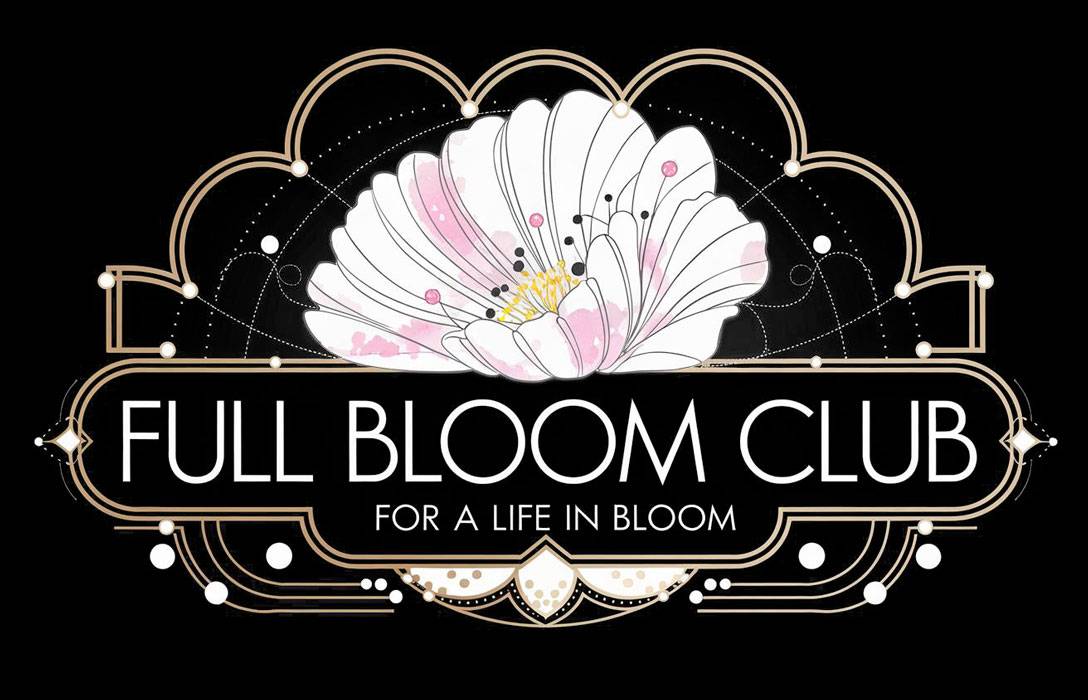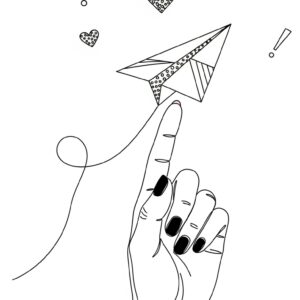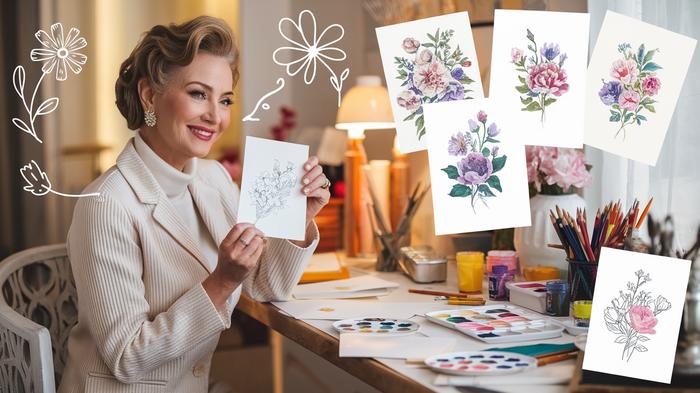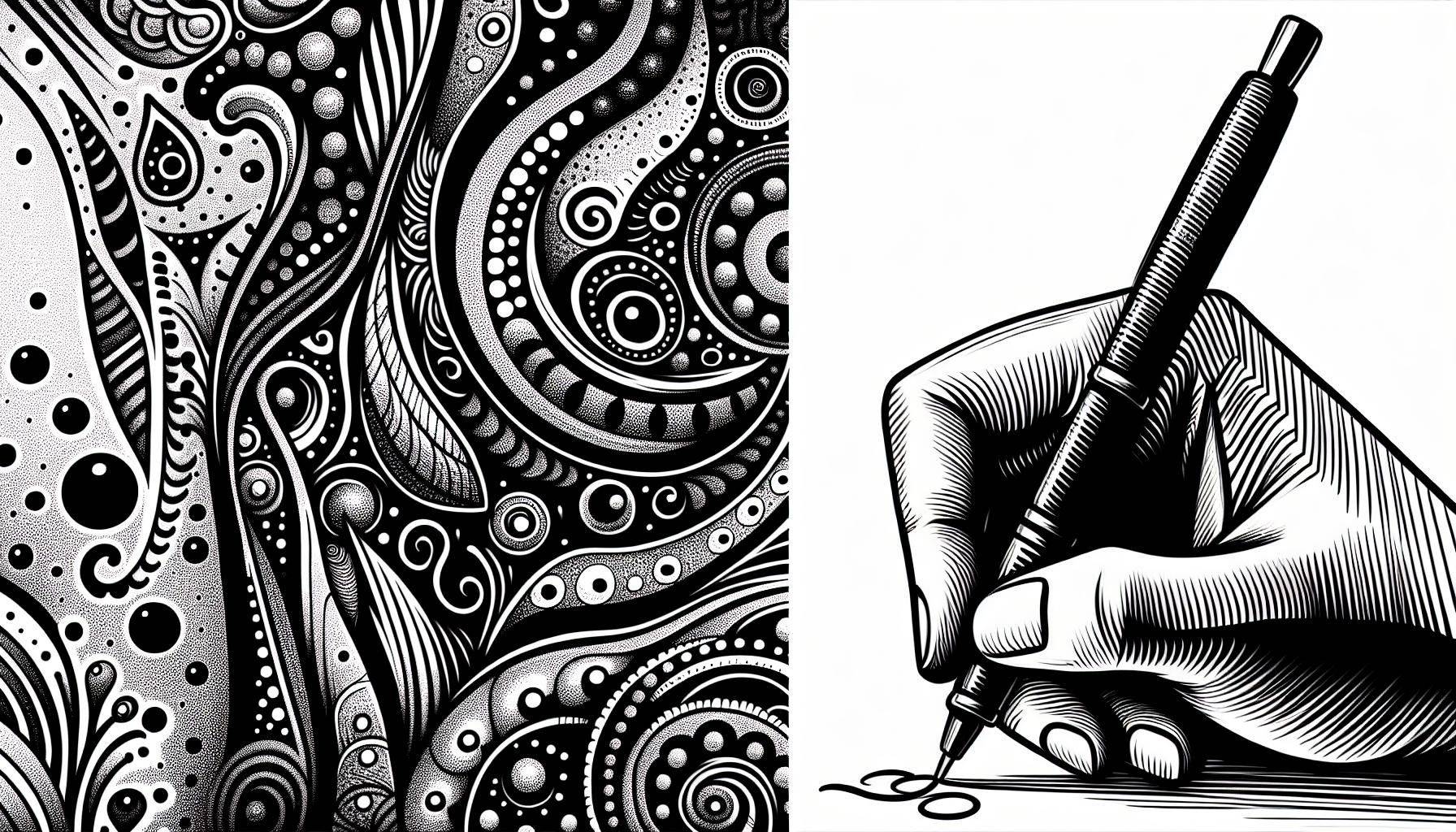Sketching Secrets You Wish You Knew Sooner

Ever felt sketching was a club with a secret handshake? No more! Dive into these game-changing sketching secrets and transform your doodles into masterpieces, all while sipping your morning coffee. Discover the magic that turns everyday enthusiasts into sketch wizards!
Start with Sketching Basics
Before you can become the Picasso of your peer group, you need to start with the basics. Sketching is the foundation of all great art, and with the right tools in hand, you’re already halfway there. So let’s dive in and get those creative juices flowing!

Grab Your Tools
To embark on this artistic adventure, you’ll need to arm yourself with the right arsenal. Think of it as gathering your gear before a quest—you wouldn’t slay dragons with a butter knife, right? Similarly, you can’t sketch without the proper equipment. Here’s a quick checklist for your toolkit:
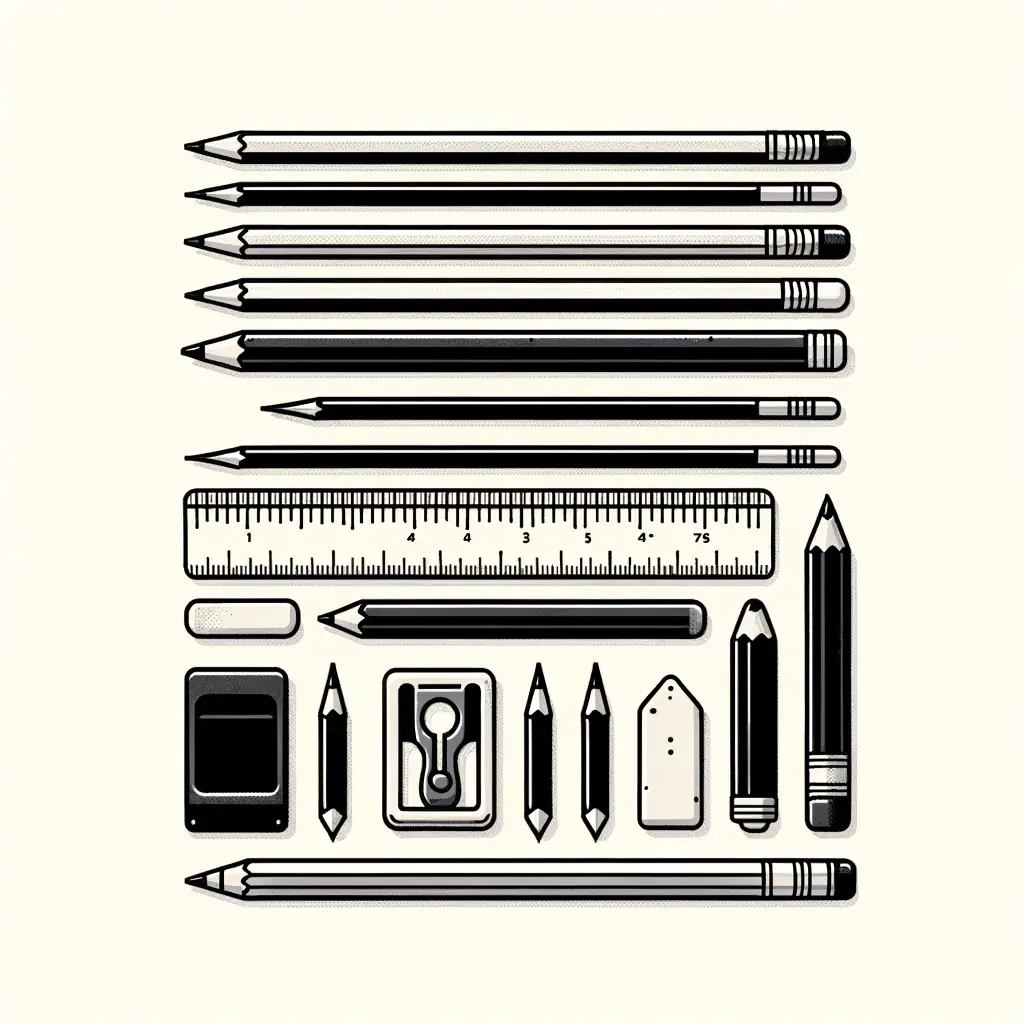
- Pencils: Your trusty steeds in the realm of sketching. Grab a variety of graphite pencils, from the steadfast HB to the daring 6B.
- Erasers: Not just your sidekick for oopsies but also your secret weapon for highlights and textures.
- Paper: Whether you prefer smooth or textured, make sure it can handle an eraser like a champ.
- Sharpener: Because nobody likes a dull pencil, unless you’re into that sort of thing (no judgment here!).
Remember, the choice of tools and surfaces can greatly impact the outcome of your artwork, so choose wisely. And if you’re feeling fancy, why not throw in some charcoal or Conté for that extra oomph?
Understand Pencil Grades
Now, let’s talk about the secret language of pencils. When you’re in the sketching circle, “HB” isn’t just a friendly way to say happy birthday. Pencil grades range from hard (H) to soft (B), and they’ll affect your sketching more than your horoscope influences your day.
| Grade | Description |
|---|---|
| H | Harder pencils, they’re the introverts of the pencil world—subtle and light. |
| B | Bold and soft, they’re the life of the party, leaving a mark wherever they go. |
| HB | The Goldilocks of pencils—not too hard, not too soft, just right for everyday doodling. |
Using different pencil types allows artists to achieve a variety of effects in their sketches, with harder pencils giving light and fine lines, while softer pencils produce bold and dark lines Cowling and Wilcox.
So, you wonder, which pencil should you choose? If you’re just starting your sketching journey, an HB can be your best friend. But don’t be afraid to flirt with other grades. Mix and match until you find the ones that make your heart sing and your sketches pop. And remember to keep them sharp for precision—unless you’re going for that abstract look.
Ready to start sketching? Check out our articles on how to draw and pencil drawing for more tips and tricks. Whether you’re interested in landscape drawing, figure drawing, or just some good old-fashioned doodling, we’ve got you covered. Now go forth and sketch like no one’s watching!

Techniques for Tactile Textures
Let’s get down and gritty with textures in your sketches. You’re not just drawing; you’re a magician of the pencil, conjuring up the illusion of touch with simple lines and shades. So, grab your wand—er, I mean pencil—and let’s hatch and smudge our way to tactile triumph!
Hatching Your Masterpiece
Hatching is like the secret sauce to adding that oomph of realism to your sketches. Imagine you’re a DJ on paper, and your pencil is dropping beats in the form of lines. These aren’t just any lines, though; they’re parallel with a purpose. Hatching involves drawing these lines close together to create the illusion of shade and depth.
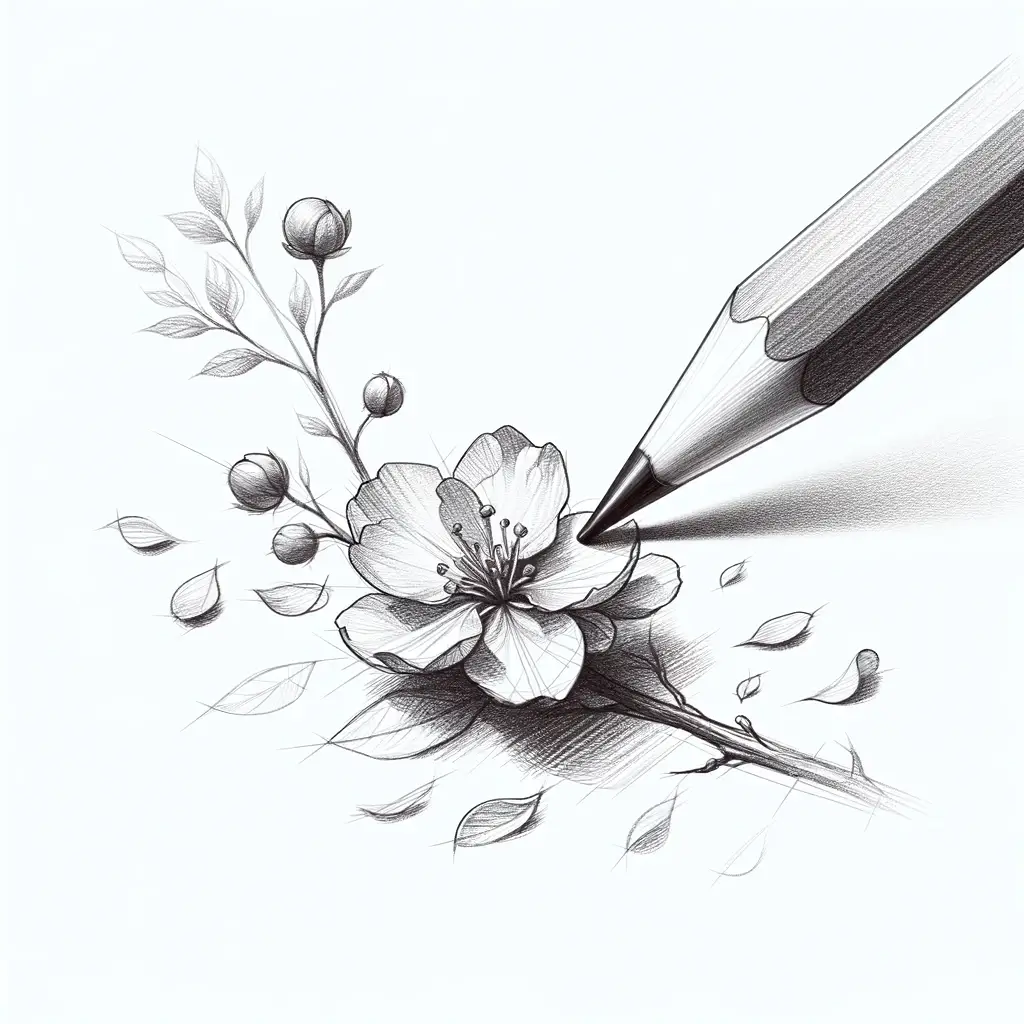
Now, depending on how you lay down these groovy lines—vertical, horizontal, or diagonal—you can spin up different textures and make your drawing pop. It’s like having a dance-off on your paper, and each direction has its own moves. Want to add more drama? Cue the cross hatching! This is where lines intersect and mingle to create even deeper shades, perfect for those dramatic shadows in your figure drawing or under the brim of a noir detective’s hat in your line drawing.
Smudging the Rules
Who said staying within the lines was fun? It’s time to smudge the rules! Take your finger, a piece of tissue, or a tortillon—your smudging sidekick—and gently blend those pencil strokes. This is where you play the role of a makeup artist, but instead of cheekbones, you’re contouring hills in your landscape drawing or softening the edges in a dreamy gesture drawing.
Smudging is all about the subtlety of shades and the smooth transitions between the light and the dark. It’s the yin and yang of your sketch, bringing balance and unity to the force of your pencil. With each gentle rub, you’re not just blending graphite; you’re blending the very soul of your drawing, giving it life and breath.
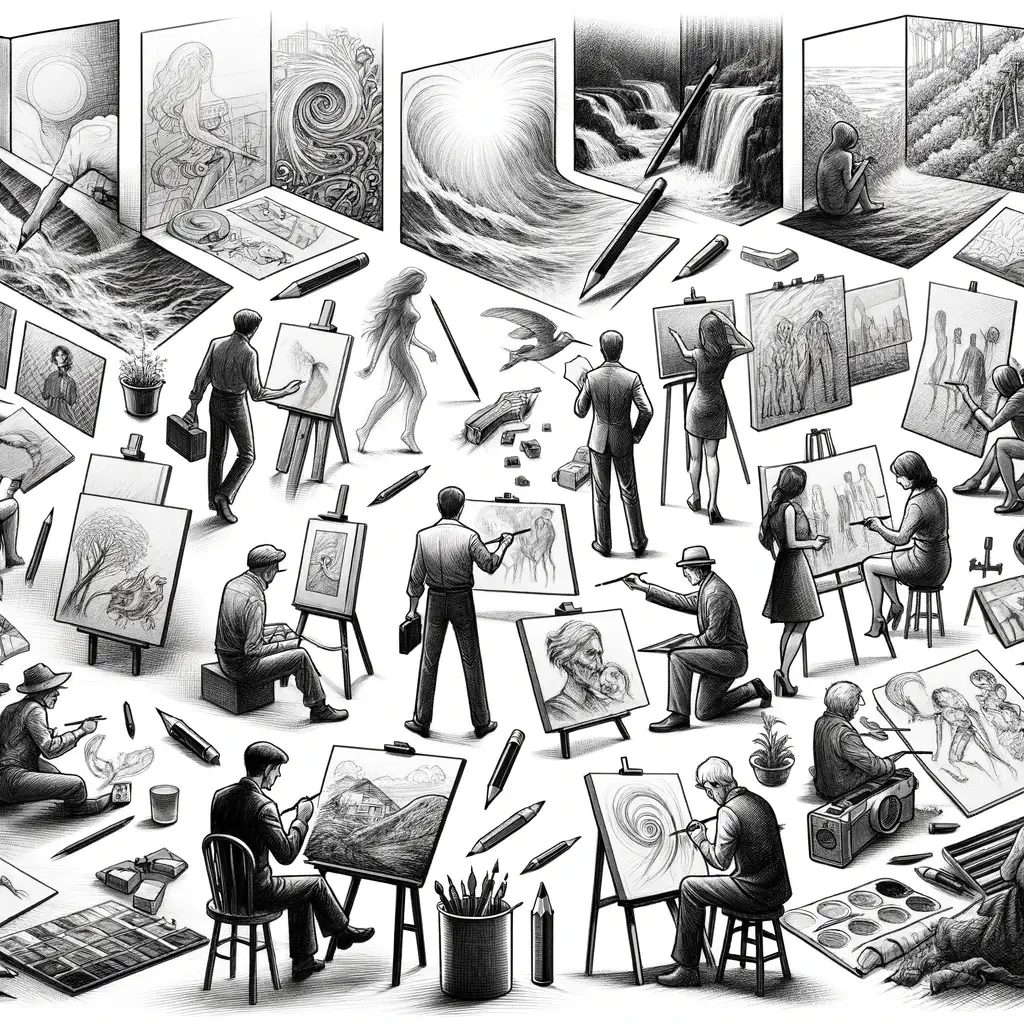
And here’s a pro tip for you: if you’re smudging with fingers, the natural oils can add an unexpected twist, so why not make it part of your signature style? Just remember, smudging isn’t about losing control; it’s about directing chaos into a chorus that sings on your page.
So there you have it, your route to becoming the Beethoven of textures in the symphony of sketching. Whether you’re hatching your way to textural nirvana or smudging like a boss, remember that every line, every shade, is a step on your artistic journey. Keep experimenting and let those tactile textures tell the tales you’ve yet to speak aloud.
The Art of the Eraser
Who says erasers are just for mistakes? If you think that, you’re missing out on half the fun! The humble eraser is your secret weapon in the battle against the blank page. Let’s get down to the nitty-gritty of how these unsung heroes of your pencil case can transform your sketching from “meh” to “masterpiece.”
Highlighting with Kneadable Erasers
Kneadable erasers, also known as putty erasers, are like the Play-Doh of the art world. They’re pliable, fun to fiddle with, and you can shape them into any form to suit your artistic whims. According to Artsy, these erasers are perfect for gently lifting graphite to create those elusive highlights that bring your drawings to life.
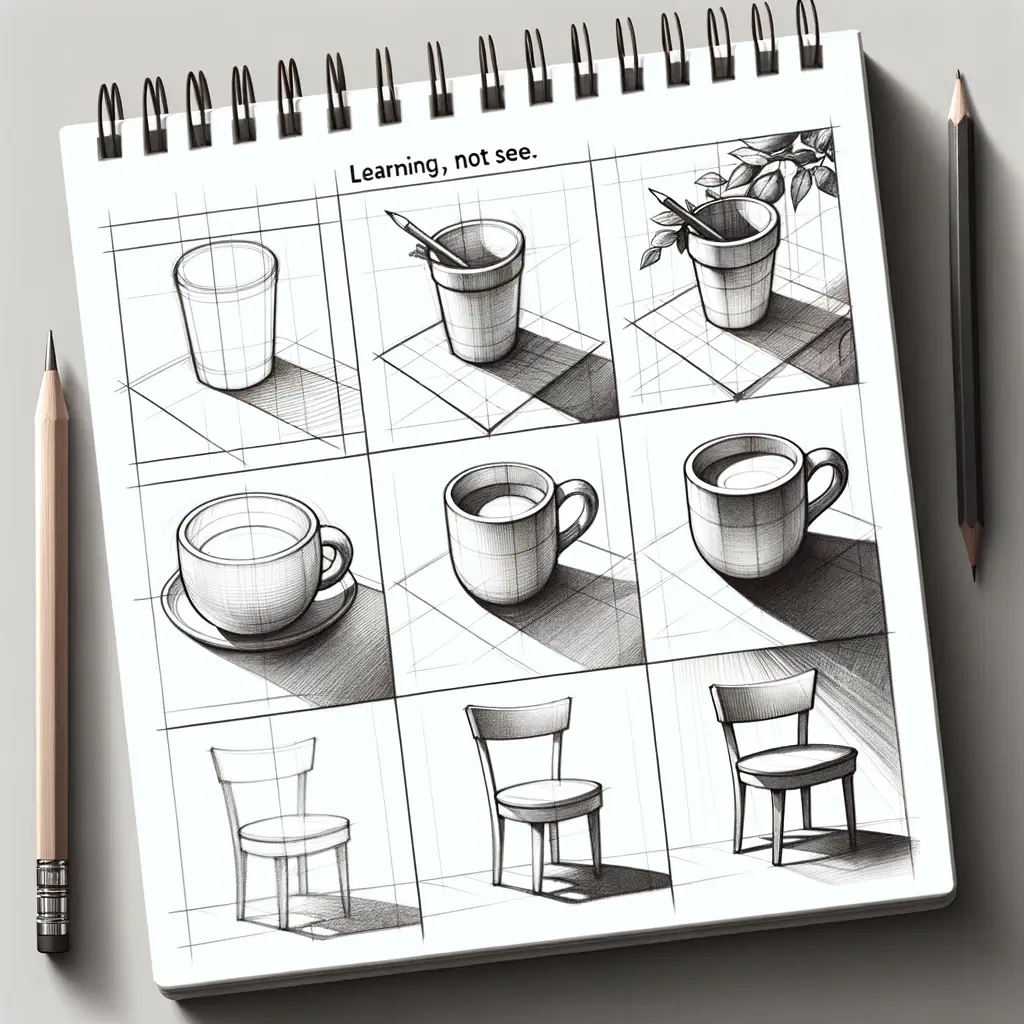
| Eraser Type | Best Uses |
|---|---|
| Kneadable | Highlighting, subtle shading, correcting |
To use a kneadable eraser, just dab or roll it over the area you want to lighten. No elbow grease required – it’s like giving your paper a gentle massage. And the best part? They don’t leave any pesky residue behind, so your doodling sessions stay clean as a whistle.
Detailing with Precision Erasers
For those tiny, intricate areas where a regular eraser feels like a bulldozer, precision erasers come to the rescue. These little marvels are your detail detectives, sniffing out any unwanted lines or smudges that dare to mar your masterpiece. As Artsy notes, a precision eraser is essential for removing small areas of graphite without disturbing the rest of your work.
| Eraser Type | Best Uses |
|---|---|
| Precision | Detail work, sharp edges, tight spaces |
When wielding a precision eraser, think of it as a scalpel in a delicate art surgery. You can carefully carve away the graphite to reveal the pristine paper underneath, allowing you to define edges or add intricate details to your pencil drawing with surgical precision.
In the grand theater of sketching, your erasers are not just backstage crew but star performers in their own right. They do more than just fix boo-boos; they help you add depth, texture, and drama to your scenes.
Find Your Drawing Style
Unleashing your inner artist means discovering a drawing style that’s as unique as your fingerprint. So, let’s get those creative juices flowing and your pencils dancing across the page!
Experiment with Strokes
Did you know that the humble pencil stroke is a rebel at heart? It refuses to go in just one direction! Vertical, horizontal, diagonal—each angle tells a different story on your canvas. Cowling and Wilcox remind us that the direction of your pencil strokes can drastically alter the texture and appearance of your masterpiece.
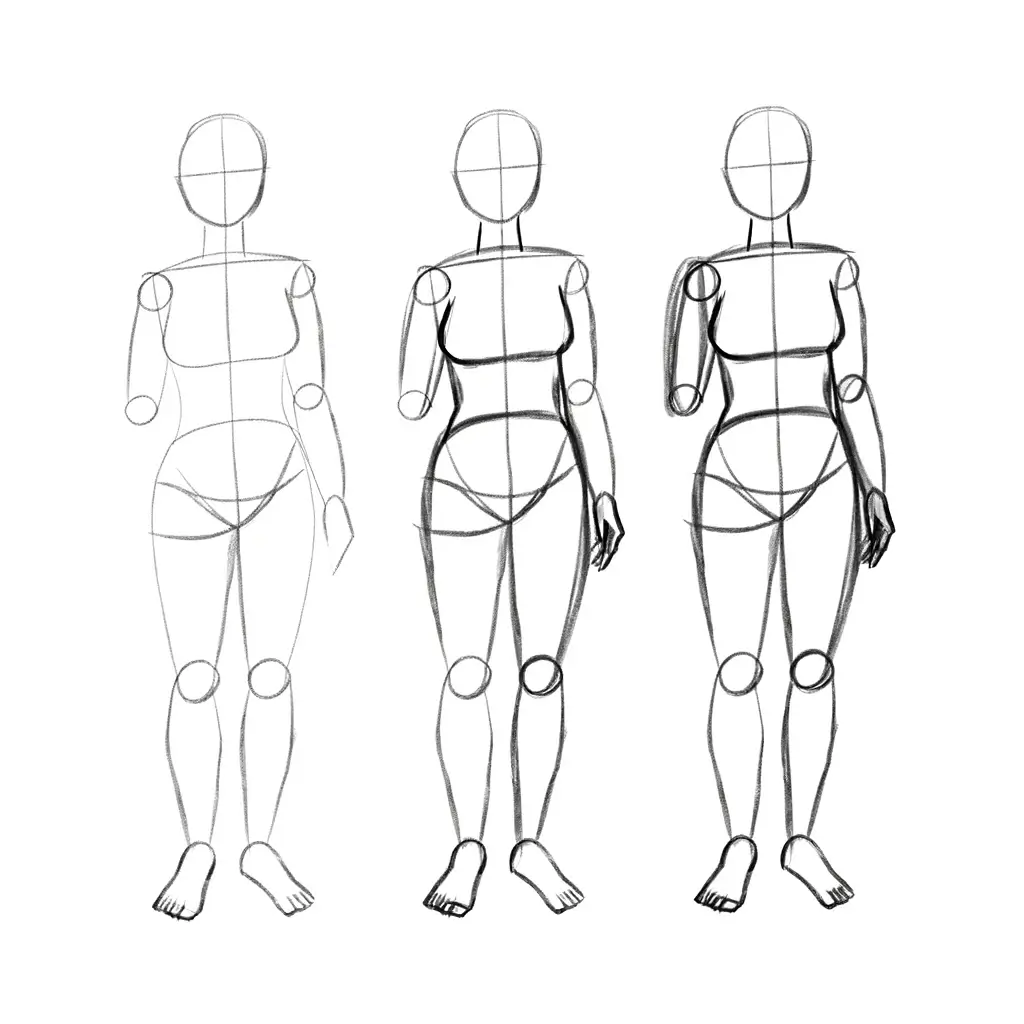
Get wild and try out a variety of strokes in your sketches. Maybe today’s a zig-zag kind of day, or perhaps gentle waves are calling your name. Mix and match to see how light, feathery strokes differ from bold, pressing lines. Don’t forget to switch up your pencils! Hard pencils (H) will give you those light, delicate lines for when you’re feeling subtle, while soft pencils (B) are there to make a statement with thick, dramatic lines. Check out our pencil drawing guide to become a stroke sorcerer!
Play with Perspectives
Remember, your drawing pad is a playground, and perspectives are your new best friends. Whether you’re sketching the Eiffel Tower or your favorite coffee mug, playing with perspectives can turn a ‘meh’ sketch into a ‘wow’ wonder.
Dive into the rabbit hole of perspective drawing and watch as your flat drawings gain depth and dimension. Want to make an object pop? Try a worm’s-eye view. Looking to add grandeur? A bird’s-eye view might be your ticket. And for those feeling adventurous, why not dabble in a little figure drawing or landscape drawing with a twist of perspective?
Remember, sketching is all about having fun and letting your creativity off the leash. There are no rules, only endless possibilities. Happy sketching, and may your eraser always be kind!
Sketching for the Soul
Who knew that scribbling away on a piece of paper could be a workout for your noggin? And it’s not just about flexing those creative muscles—there’s a whole lot more to this sketching business than meets the eye!
Cognitive Benefits of Drawing
Alright, Picasso-in-the-making, let’s talk about the brainy perks of doodling. When you draw, you’re not just making pretty pictures; you’re giving your brain a full-blown exercise session. It’s like a Zumba class for your neurons! According to the brainy folks at UX Collective, sketching engages both sides of your brain: the right side gets all artsy-fartsy, while the left side keeps things logical. This dynamic duo works together to build new connections and pathways, which is like doing mental gymnastics without even breaking a sweat.

So, next time you’re sketching away, remember you’re not just creating art—you’re also boosting your creativity, strategic thinking, and focus. And who doesn’t want to be a smarty-pants with a paintbrush?
Sketching as Stress Relief
But wait, there’s more! Not only does drawing make you sharper than a pencil tip, but it’s also a fantastic way to tell stress to take a hike. If you’ve ever felt like your mind is a runaway train of worries, just grab your sketchpad and derail that anxiety with some artistic flair.
You know that feeling when you’re so absorbed in your pencil drawing that the world just fades away? That’s you, tapping into the zen zone. As you lose yourself in the rhythm of sketching, you’re actually calming your mind and giving it a well-deserved break from life’s little dramas.
Sketching isn’t just about making art—it’s about making space in your head. It’s like a mini-vacation for your brain, and the best part? No packing required! So, whenever life throws you a curveball, just whip out your trusty sketchbook and smooth out those crinkles in your brain.
Embracing Your Inner Da Vinci
So you fancy yourself the next Da Vinci, eh? Well, grab your quill—or pencil—and let’s delve into the art of learning from those who’ve doodled their way into history. And don’t fret, we’ll even throw in a dash of science to spice up your artistic concoction, just like good ol’ Leonardo did!
Learning from the Masters
First things first, let’s talk about the big guy: Leonardo da Vinci. Born in the land of pasta and romance (Italy, in case you were wondering), in 1452, this fella was the epitome of a Renaissance man. Painter, sculptor, engineer, mathematician, and party planner—okay, maybe not that last one, but you get the picture. His sketches, like the intricate Study of Neptune, will have you saying “Mamma mia!” faster than you can drop a meatball.

Now, you might not have a Mona Lisa in your sketchpad just yet, but that’s no reason to throw in the towel! Leonardo was all about observation. He’d probably tell you to sketch your cat in 17 different poses or the way the sunlight hits your morning coffee (after you’ve had a sip, of course). So, what can you learn from the likes of Da Vinci? Observe, observe, and then observe some more.
Incorporating Science in Art
But wait, there’s more! Did you know that your sketchbook could double as a scientific journal? Da Vinci sure thought so. He was notorious for blending art with a healthy dose of science. From detailing how light bounces off your nephew’s shiny bald head to the way a leaf flutters to the ground—Leonardo sketched it all, with scientific precision and an artist’s flair (Museum of Science, Boston).
In fact, during the Renaissance, artists were practically part-time scientists. They figured out how to trick the eye into seeing depth on a flat canvas, a little party trick known as linear perspective. Da Vinci was a pro at this, using these mathematical rules to make his paintings pop like a 3D blockbuster (Museum of Science, Boston).
So, as you sprinkle some science into your art, remember that it’s all about the laws of perspective, baby! Whether you’re sketching out your dream home or a bowl of fruit, understanding the basics of perspective drawing can take your doodles from flat to phat. And who knows? With a bit of practice, you might just have people queuing up to see your version of The Last Supper—but hopefully, with fewer food fights.
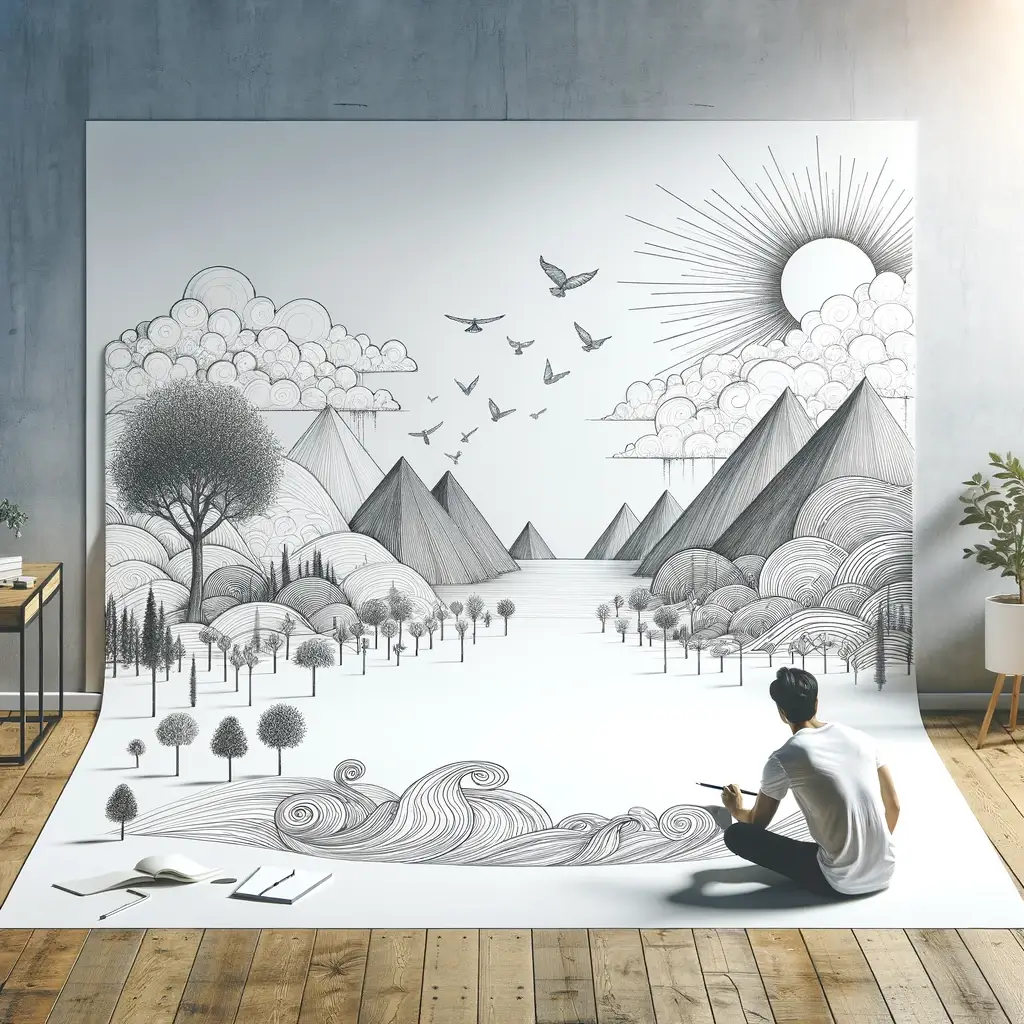
Now, go unleash your inner Da Vinci, and remember, whether you’re crosshatching your way to glory or finding zen with line drawing, every sketch is a step towards your masterpiece. Keep that pencil dancing, and who knows? Someday, a blogger might just be writing about your magical touch with the graphite wand.

